Your drain pipe plays a crucial role in properly releasing the air conditioner's condensation buildup outside your house. Extending it may sound very simple, but proper installation offers many rules and other aspects to consider.
So how to extend it anyway? Rest assured, we've done a lot of research to assist you in this regard, and here's the answer we've found!
The easiest and most effective way to extend your air conditioner's drain pipe is to connect an extension pipe. Also, it is best to follow ideal installation guidelines on extending your drain pipe.
That was easy, was it? Keep reading as we discuss other methods to reroute your air conditioner's drain line. That said, let's dive in!
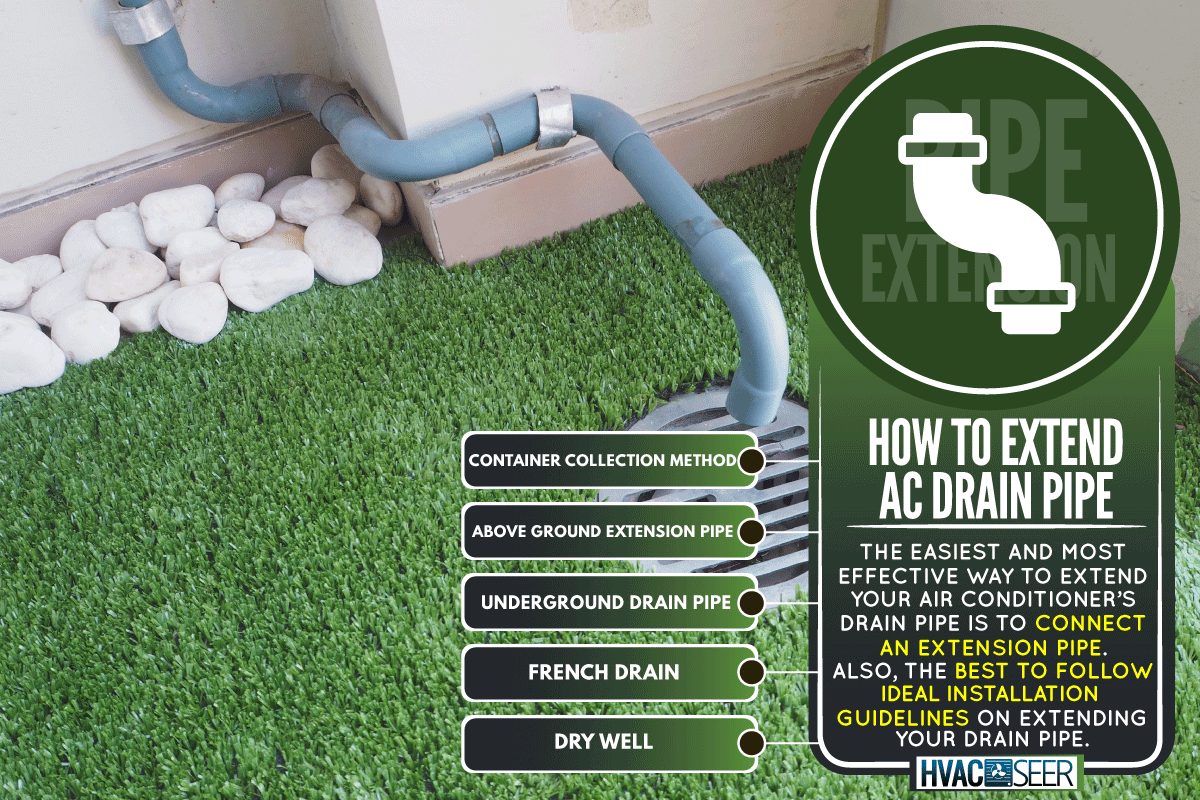
How Do You Reroute An AC Drain Line?
It's not unusual for water to leak from your outside air conditioner into your side yard.
Correcting drainage problems could become stressful because there's a potential that your fast repair can cause issues for other people.
Follow our rerouting drain line methods below:
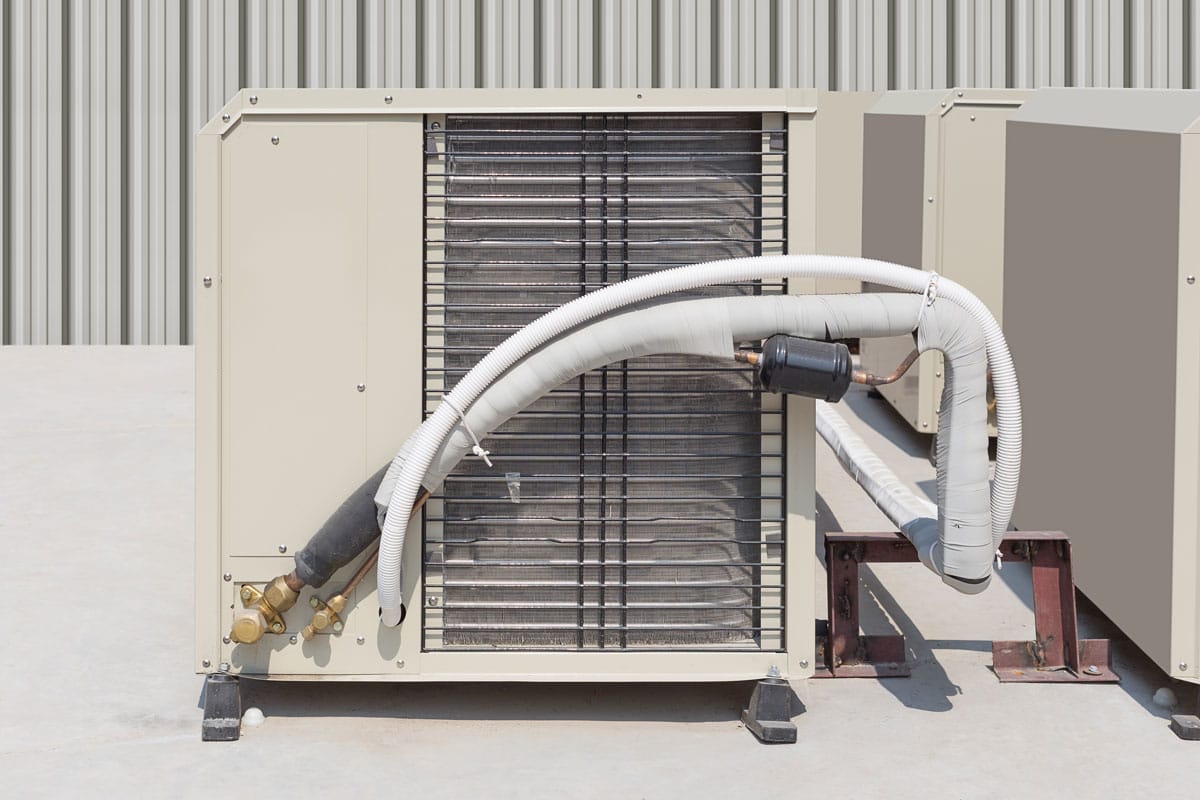
Above Ground Extension Pipe
This is the simplest way to reroute the air conditioner drain line. All you need to do is to attach the existing drain pipe with an extension hose away from your house.
Underground Drain Pipe
Install the condensation drain pipe into an underground drainage line, which directly goes downhill, far from your yard. You can hide the condensation drain pipe from any possible complications.
French Drain
Another way to take your system condensation water is using a French drain. It takes water into the ground surface by enabling it to pass via a ditch packed with gravel.
Catch Basin
If there are puddles of water, you can create a catch basin in the middle. A catch basin is a box set underground with grates on the top and connections for underground pipes.
The catch basin collects surface water and draws it underground into drainage pipes, then transport it away outside your home.
Dry Well
You can build a dry well if there's no other location to send away the drainage pipes. A dry well is just like an underground structure or a hole full of gravel and rock.
It acts as a reservoir for water that gradually seeps into the subsoil around it.
Container Collection Method
In contrast, this way is the old school ways. Suppose you install your air conditioner unit high enough on the ground. Then, using a container or a bucket to reroute its drain line is another good option.
Moreover, the water you collect can be another source to water your garden or plants.
Where Do You Run An AC Drain Pipe?
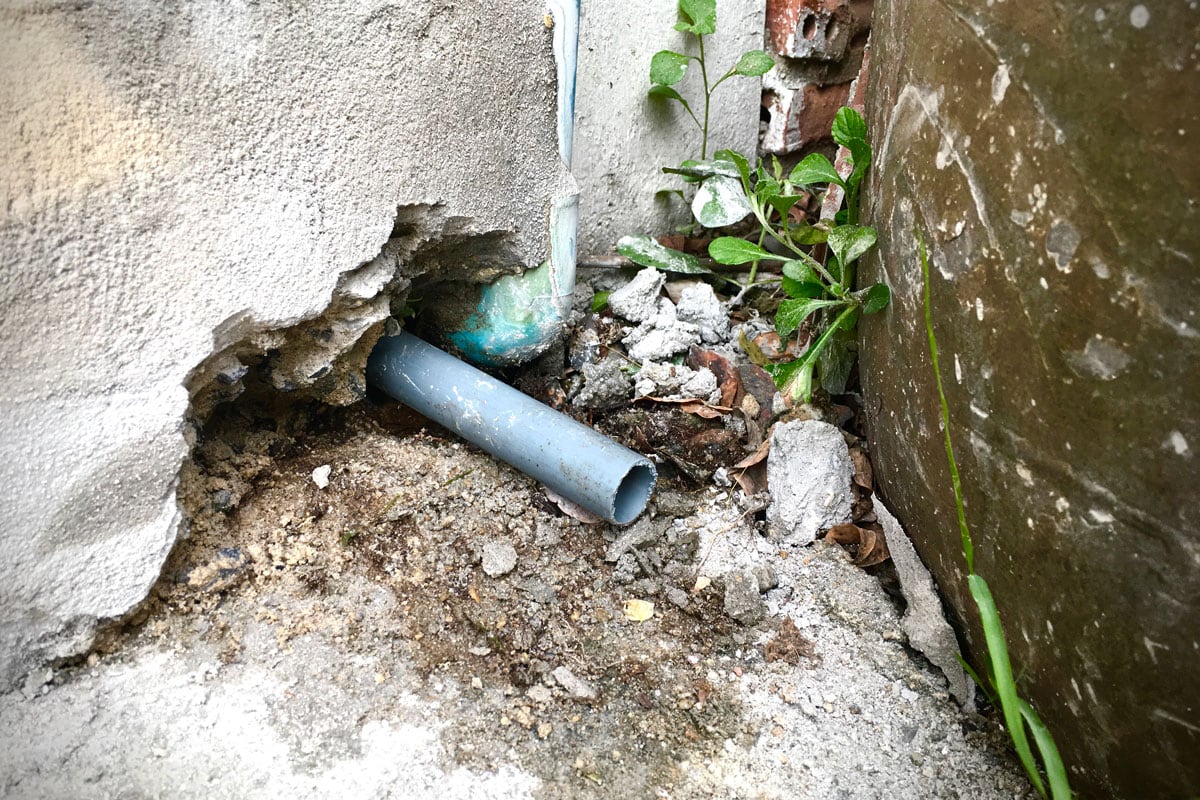
the condensate drain line is a crucial component of your air conditioner since it eliminates condensation from the evaporator coil. Knowing where it goes is essential for ensuring it functions properly.
Usually, the air conditioner's drain line runs from your interior unit to the nearby outside area around it. The pipe's connection lengthens across the exterior of your house where it typically ends.
In addition, it has a cap that serves as the condensation opening point setting around the indoor air conditioner unit. If you live in condensed populate places, you must avoid dispensing your condensation waste in public areas.
Identifying where to release your air conditioner's condensation waste is necessary as per your local condensation disposal code.
It states that condensation from any cooling coils shouldn't cause trouble to public spaces.
What Is The Pipe Material And Size For Condense Drain Pipes?
The ideal materials for a condensate drainage system include the following:
- ABS
- PVC
- CPVC
- Copper
- Cast iron
- Copper alloy
- Polyethylene
- Galvanized steel
- Polypropylene pipe
- Cross-linked polyethylene
This type of tubing material specializes in pressure and temperature installation.
Joints and connections shall comply with the plumbing codes and rules, primarily if you reside in Rapid City.
Condensate waste and drain lines must have an inner diameter of at least 3/4 inches. They should not become smaller as they travel from the drain pan system to avoid clogging the drain line.
Do I Need A P Trap For My AC Drain Line?
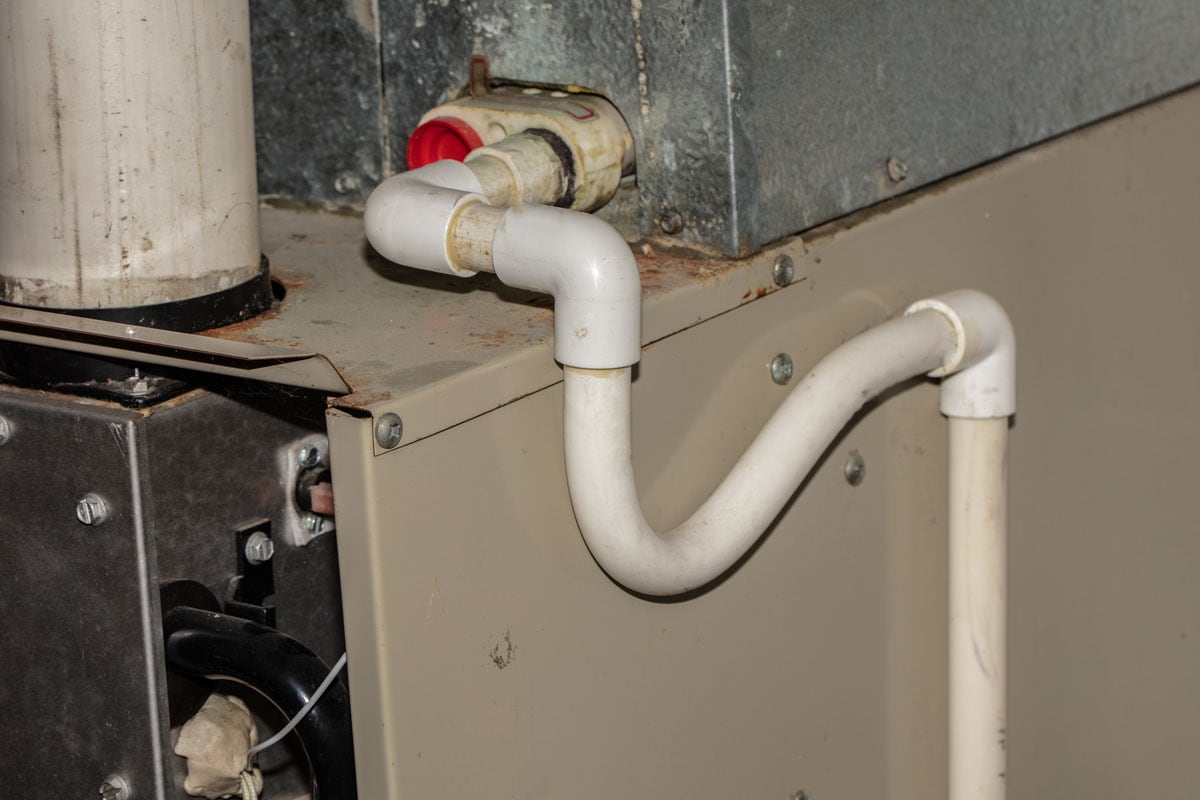
Since it is necessary to collect and discharge condensate waste from the same types of water-supplying appliances. Including the air cooling coils, air washers, fuel-burning condensing equipment, and evaporator coolers.
You must also install a trap on your drainage system. It's stated in the code that any appliances that generate moisture must use an alternative waste pipe.
Doing so will ensure that your air conditioner will drain the condensation water easily and properly. Additionally, the waste pipe must have a slope of at least 1/8 inch per foot, about 10.5 mm/m or 1% slope.
You should also consider increasing the size of the drainage pipe where the vertical drain is present.
What Causes An AC Drain Line To Clog?
Drain line clogs are typically the result of bacteria development and buildup inside the air conditioner unit's drainage pipe. In addition, leaves, other plants, or debris from the surrounding can clog your AC drainage system.
It's no secret that condensation will also result in an issue with the drain line. Condensation can potentially interact with dust as it drops from the evaporator coil.
Dust can transform into mud and sludge as it reacts with humidity levels, eventually causing a drain line blockage. Furthermore, during the heating season, sludge accumulation can dry out quickly and solidify.
It's always a great move to prevent any problem in your air conditioner drain line rather than fix it. Otherwise, you'll have to resort to solving the trouble to keep your air conditioner functioning well again.
What Are The Signs Of A Clogged AC Drain Line?
When you notice indications of a condensate drain pipe obstruction, you must act immediately to prevent severe damage to your air conditioner system or your house.
An AC drain line blockage is a fairly typical source of system failure and frequently needs a simple solution. After all, most homeowners fail to see this early on and are seemingly unaware of this issue.
The following are the common signs that indicate your drain line is clogging:
Puddles Of Water
Suppose puddles of water are visible around your air conditioner unit. This results from an overflowing drain pan due to its drainage clogging.
Water Damage
If you notice that water is leaking, it needs a repair right away. Even the slightest amount of water leaking from the drain line will certainly damage the aesthetic of your walls and floors.

Musty Smell
A musty odor is one of the other clear indications of an AC drain line's clogging since bacterial growth is happening inside the system or surrounding the air conditioner drain line.
What's more, if you're using one, a musty smell can also occur in the PTAC unit.
AC Won't Turn On
Several indoor air conditioners trip, preventing the air conditioner from turning on when the system drain pan stops draining.
These signs cannot be overemphasized and thus needs HVAC specialist inspection quickly.
How To Unclog Your Air Conditioner Drain Line
You must perform routine maintenance on your air conditioner. You risk your air conditioner unit acquiring dirt and grime and malfunctioning if you ignore to service it.
Now, to clean your air conditioner's drain line, kindly follow our effective cleaning steps:
- Shut OFF the breaker and the thermostat of your air conditioner unit.
- If the drain line location is below your AC unit, gently remove its panel to access the drain line correctly.
- Clean the drip pan thoroughly using warm water and an HVAC cleaning agent.
- Clean the condensate drain line by vacuuming it within 1 to 2 minutes to remove all dirt buildup.
- If it is still clogging, use vinegar and mix it with water to clean the remaining dirt.
- Properly rinse it with cool fresh water; you can also use a hose with a nozzle to ensure all debris will remove.
See this heavy-duty vacuum on Amazon.
Check this hose with a nozzle on Amazon.
To Finish It Up
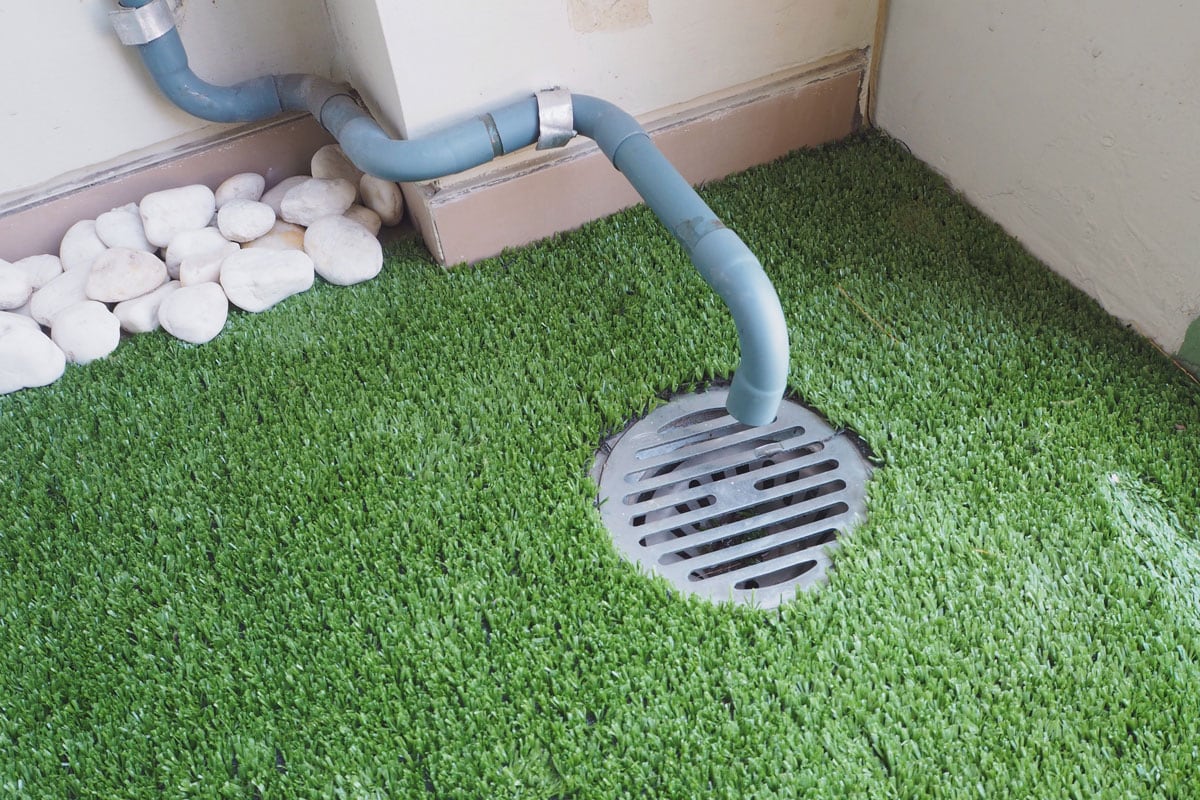
Extending your air conditioner's drain pipe will help avoid damage to your AC system.
It's always a great idea to consider the drain line system installation code to avoid possible lawsuits in the future. This article discusses the proper and ideal way to extend your air conditioner's drain line.
We hope that this information helps you follow the correct installation process to keep your AC operating at an optimal level.
Before you go, please read our other helpful articles below!


